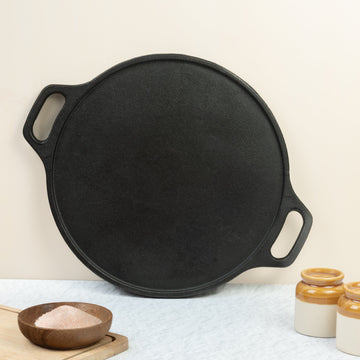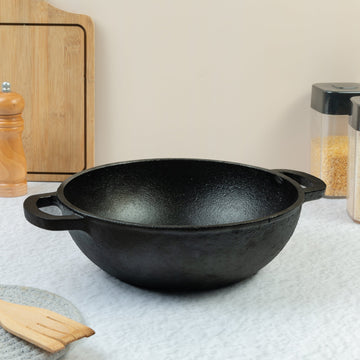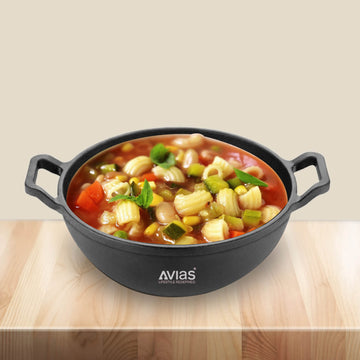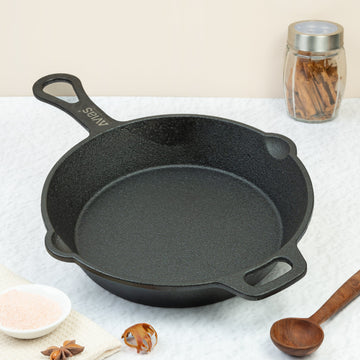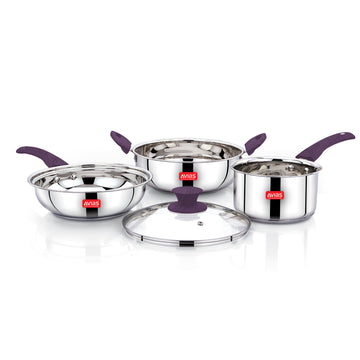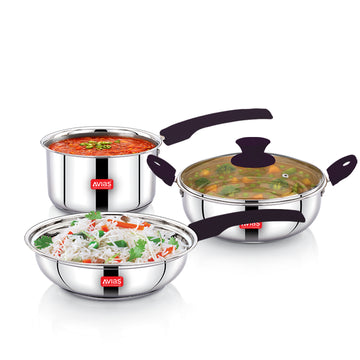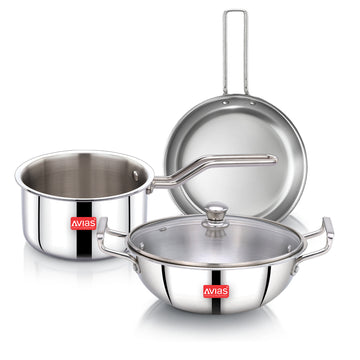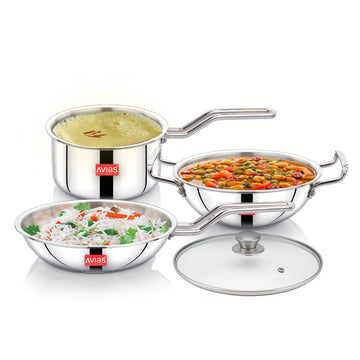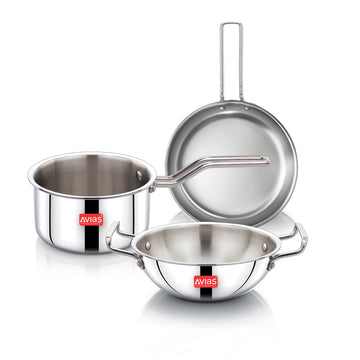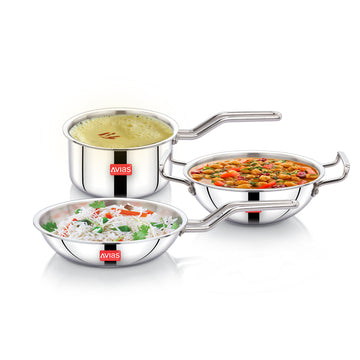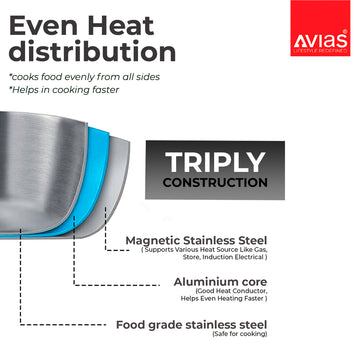Non-Stick vs. Stainless Steel Cookware: Unveiling the Differences

When it comes to selecting cookware sets for your kitchen, understanding the differences between various materials is crucial. Two popular options are non-stick and stainless steel cookware. Both have unique features and advantages that can impact your cooking experience. In this blog, we will delve into the differences between non-stick and stainless steel cookware, helping you make an informed decision about which is best suited for your culinary needs.
Non-Stick Cookware:-
Non-stick cookware is widely recognized for its convenience and easy cleanup. It is typically made of aluminum or stainless steel with a non-stick coating, such as Teflon. The primary benefit of a non-stick cookware set is its ability to prevent food from sticking to the surface, reducing the need for excessive oil or butter while cooking. This feature is especially useful when preparing delicate items like eggs, pancakes, and fish fillets.
Advantages of Non-Stick Cookware:
- Easy Release: Non-stick surfaces allow food to effortlessly slide off the pan, making it simpler to flip and remove delicate foods without the risk of them falling apart.
- Quick Cleanup: Non-stick coatings facilitate easy cleanup as food residue is less likely to stick to the surface. Wiping the pan with a soft sponge or cloth is often sufficient.
- Reduced Oil Consumption: The non-stick coating minimizes the amount of oil or butter required for cooking, promoting healthier meal preparation.
Limitations of Non-Stick Cookware:
- Sensitivity to Heat: Non-stick coatings may be susceptible to damage at high temperatures. Overheating can cause the coating to deteriorate or release potentially harmful fumes.
- Delicate Handling: Non-stick surfaces can be more fragile than other kitchen cookware materials, requiring gentle handling and utensils that won't scratch or damage the coating.
- Limited Browning and Searing: Non-stick cookware is not ideal for achieving deep browning or crispy sears on certain ingredients since high heat is necessary for these techniques.
Types of Non-Stick Coatings:
-
Teflon: One of the most common types, Teflon is a brand name for polytetrafluoroethylene (PTFE). At the same time, it offers excellent non-stick properties, is not safe to use, and has led to the development of alternatives.
-
Ceramic: Ceramic coatings are considered a healthier option as they are free from harmful chemical coatings like PFOA and PTFE. They offer good non-stick properties but are very expensive and require careful handling.
-
Stone-coated: This type of coating mimics the appearance of stone and offers decent non-stick performance. However, the chemical coating can also be harmful!
Stainless steel cookware:-
Stainless Steel Cookware is revered for its durability, versatility, and professional appearance. It is made primarily of stainless steel, an alloy of iron, carbon, and other metals. Stainless steel pans have a smooth, shiny surface that is resistant to staining, rust, and corrosion. Unlike non-stick cookware, stainless steel pans do not have a non-stick coating!
Advantages of Stainless Steel Cookware:
- Durability: Stainless steel cookware sets are known for their long-lasting durability, which makes them resistant to scratches, dents, and warping.
- Versatility: Stainless steel pans are compatible with various cooking techniques, including browning, searing, and deglazing. They can be used on different heat sources, including stovetops and ovens.
- Heat Conductivity: Stainless steel pans often have an aluminum or copper core in the base, enhancing heat conductivity and ensuring even heat distribution.
Limitations of Stainless Steel Cookware:
- Stickiness: Unlike non-stick surfaces, stainless steel pans may require the use of oils or fats to prevent food from sticking.
- Cleaning Challenges: Stainless steel pans may require more effort and specialized cleaning techniques to remove stubborn food residue or stains.
- Learning Curve: Stainless steel cookware sets require some practice and familiarity with heat control to prevent food from sticking or burning.
Choosing the Right Cookware for You:
The issue with traditional non-stick cookware lies in the coatings used. For decades, the industry relied heavily on chemicals like Teflon, which contains perfluoroalkyl substances (PFAS). These chemicals have raised concerns due to their potential health risks.
The Dangers of PFAS
PFAS, often referred to as "forever chemicals," have been linked to various health issues, including:
-
Infertility
-
Liver damage
-
Kidney cancer
-
Thyroid disease
These chemicals are toxic in the environment and can accumulate in the human body over time.
When deciding between non-stick and stainless steel cookware sets, consider your cooking style, preferences, and specific needs. Non-stick cookware is ideal for those seeking quick and easy cleanup and minimal oil usage. It is particularly beneficial for delicate foods. On the other hand, stainless steel kitchen cookware is versatile, durable, and offers more flexibility in cooking techniques.
Both non-stick and stainless steel cookware have merits and considerations. Non-stick cookware excels in convenience and easy cleanup, while stainless steel kitchen cookware, such as Avias offerings, provides durability and versatility. Assess your cooking requirements, preferred techniques, and maintenance preferences to determine which type of cookware best aligns with your culinary goals. Whichever you choose, investing in high-quality cookware from trusted brands like Avias ensures a reliable and enjoyable cooking experience. Embrace the joy of cooking with the perfect cookware companion by your side.
